SELECTED EXHIBITIONS
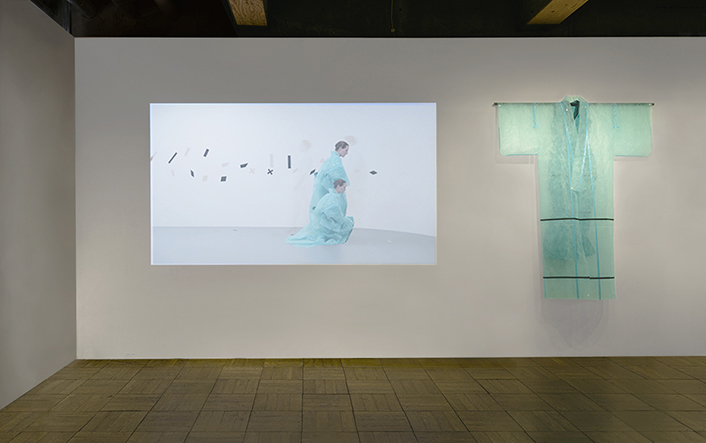 Walking Women + The Reanimated Archive
Walking Women + The Reanimated Archive
Commissioned by Kyoto D-Lab
Project Direction: Professor Julia Cassim
Kyoto D-lab Designer in Residence Exhibition
by Noam Toran and Marloes ten Bhömer
29 June – Sunday 12 August 2018
Tokyo Gallery
www.d-lab.kit.ac.jp
About the Residency and Exhibition
Kyoto D-Lab’s Designer in Residence Programme invites art and design reasearchers to KIT to develop new signature works in response to the Kyoto Institute of Technology KIT context and the major research themes of KYOTO Design Lab. This exhibition Walking Women + The Reanimated Archive centres on a joint two-month residency by Noam Toran and Marloes ten Bhömer at Kyoto D-Lab.
Walking Women
During her residency at KYOTO Design Lab, Marloes ten Bhömer collated a taxonomy of movement derived from traditional Japanese footwear and its underlying culture. Her research considers the role that design and media play in the social and cultural formation of the Japanese ‘woman in motion.’ The aim is to challenge hardened typologies and stereotypes relating to a woman’s social and physical mobility.
Her focus was classic Japanese cinema and digital characters. Employing motion analysis technology, ten Bhömer highlights the ingrained nature of a woman’s gait and how her movements are affected by such dynamics as learned behaviour and social custom. This research cumultated in the following works: The Path She Walks and Marloes as Miku.
In parallel, she investigated traditional Japanese footwear from a functional design perspective and proposes new approaches to footwear design and production. The aim of the project is not to look at shoes solely as a commercial, cultural or historical object. Rather it is to develop a design methodology that brings practical, technical and material conditions and opportunities to the fore. This research cumultated in the following works: Historic Japanese Footwear Research, Morphologic Chart and Washi Spray-On Shoe Tests. The works are part of ongoing research.
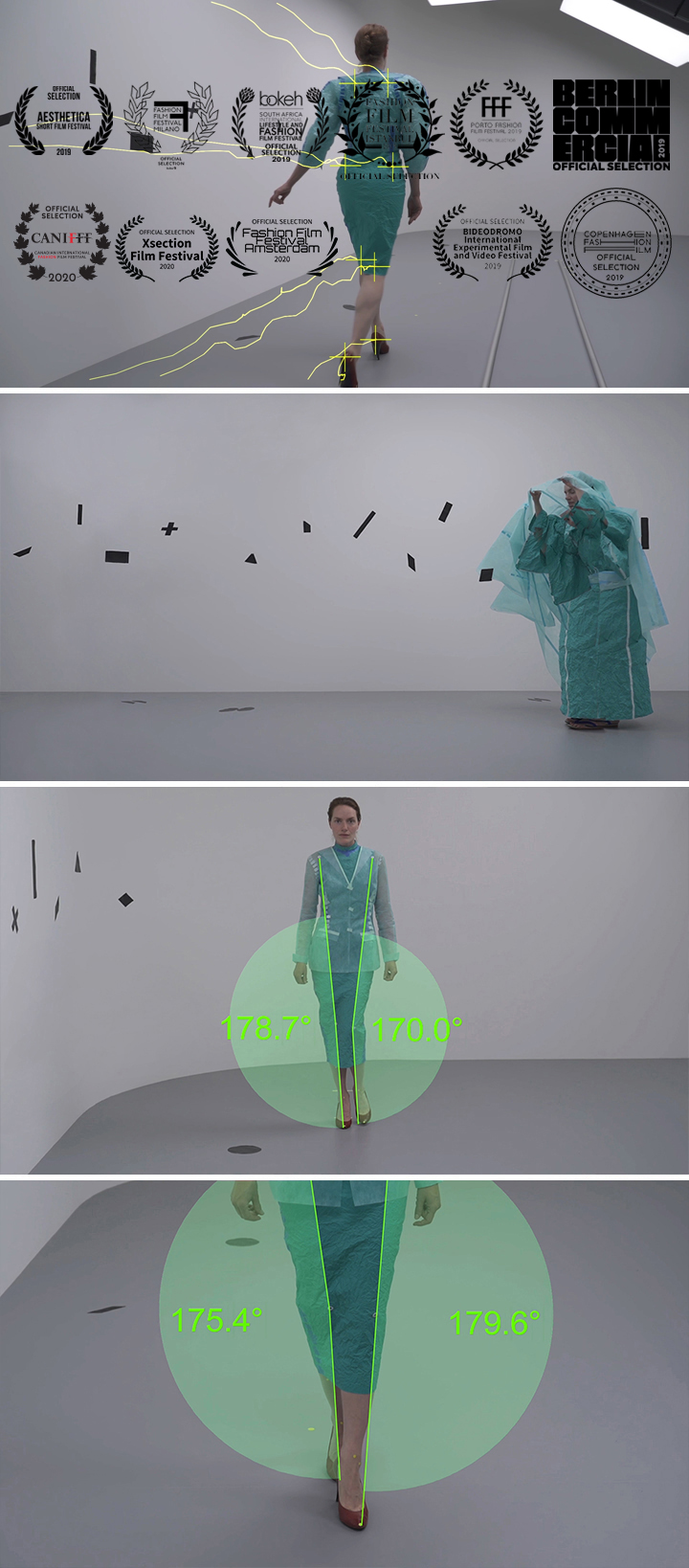
The Path She Walks / 2018
Commissioned by Kyoto D-Lab
Running time: 06:20 min
Project Direction: Professor Julia Cassim
Motion Analysis Supervision: Associate Professor Noriyuki Kida
Studio Supervision: Assistant Professor Yasushi Ichikawa
Motion Analysis: Tomohiro Inoue[KYOTO Design Lab Digital Factory]
Cinematography: Tomohiro Tanaka
Studio Supervision: Shin Yamashita[KYOTO Design Lab Wood Factory]
Soundtrack: Remco de Jong
Special thanks to Noam & Nika Toran, Marine Zorea, Naoko Minami & Kingston University
Awarded: "Best Idea" award at Copenhagen Fashion Film Festival 2019
In The Path She Walks, ten Bhömer investigates female gait in cinema to understand traditional Japanese footwear and the kinematics of gait. Walking and gait in relation to shoes and garments is imbued with learned movements, restrictions and the wearer’s idiosyncratic movements. Walking in cinema embodies other cultural and socio-political elements too, such as the construction of identity, thus making it much richer point of study than a mere technique.
In analysing the films, ten Bhömer found that a focus on a woman’s gait in Japanese and non-Japanese cinema alike often denoted a cinematic metaphor: the female protagonist is or has just undergone a change in the direction of her life. In Kenji Mizoguchi’s The Life of Oharu (1952), for example, the titular character, played by Kinuyo Tanaka, undergoes many dramatic social changes in her life, which are symbolically represented by the sheer volume of walking throughout the film. Ten Bhömer re-enacts a selection of cinematic gait moments and dissects them across cultural, social and anatomic lines. Producing a film which sits between performance art, fashion film and scientific analysis, the footage having been examined with high performance motion software. The Path She Walks reveals the relationship between gait, footwear, clothing, movement, character development and performing identity.
Films cited:
Vertigo -1958 / Dir: Alfred Hitchcock / Actress: Kim Novak
Where Chimneys are Seen - 1953 / Dir: Heinosuke Gosho / Actress: Ranko Hanai and Chieko Seki
Throne Of Blood -1957 / Dir: Akira Kurosawa / Actress: Isuzu Yamada
Life of Oharu -1952 / Dir: Kenji Mizoguchi / Actress: Kinuyo Tanaka
When a Woman Ascends the Stairs -1960 / Dir: Mikio Naruse / Actress: Hideko Takamine
Mars Attacks -1996 / Dir: Tim Burton / Actress: Lisa Marie
Kuroneko (DAUGHTER sequence) -1968 / Dir: Kaneto Shindô / Actress: Kichiemon Nakamura
Kuroneko (MOTHER sequence) -1968 / Dir: Kaneto Shindô / Actress: Nobuko Otowa
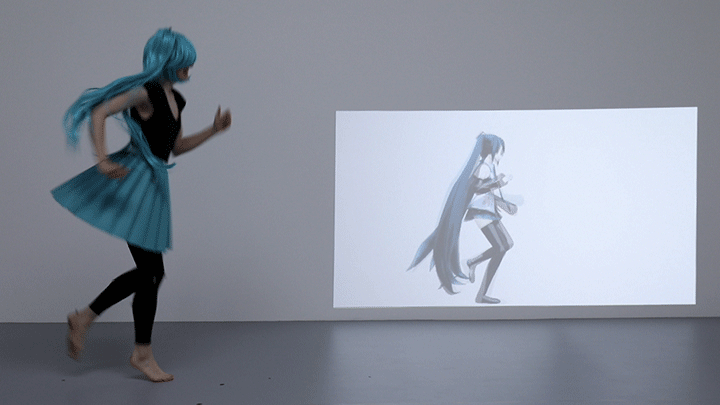 Marloes as Miku / 2018
Marloes as Miku / 2018
Commissioned by Kyoto D-Lab
Project Direction: Professor Julia Cassim
Motion Analysis Supervision: Associate Professor Noriyuki Kida
Studio Supervision: Assistant Professor Yasushi Ichikawa
Marloes as Miku, here presented as gif excerpt, investigates motion-analysis learning methods, software-generated gait and issues of digital identity as it relates to women and mobility. The focus is on the use of MikuMikuDance and MikuMikuMoving: freeware animation programmes that allow users to animate 3D models, originally produced for the Vocaloid character Hatsune Miku. The software makes it possible to animate a model’s gait and generate character types through ambulant movement resulting in a vast collection of video examples, including ‘fails’, that can be found on several online platforms.
In this video work, Marloes ten Bhömer re-enacts a series of Hatsune Miku walking animation cycles sourced from the internet to expose the discrepancy between realistic and computer-aided movement. The work also reveals the acceptance of demeaning presentations of women’s compromised mobility.
The work also addresses motion from a technical perspective and examines movement analysis learning methods. Ten Bhömer employs motion-training techniques to develop a muscle memory for movements, which are decidedly ‘inhuman.’ In traditional motion-capture coaching techniques, the subject leaves their position to passively watch their motion on screen. In contrast, ten Bhömer mimics a dance-training environment by simultaneously watching a video display of the movement to be learned as well as motion-capture footage of herself performing the motion. The next stage in this research will be to test this simultaneous looking, moving and learning in Virtual Reality with potential live muscle feedback.
________________________________________________________________________________________________________________________
 A Measurable Factor Sets the Conditions of its Operation / 2013
A Measurable Factor Sets the Conditions of its Operation / 2013
13 February - 6 April 2013
Stanley Picker Gallery
Faculty of Art, Design & Architecture
Kingston University, Knights Park
Kingston upon Thames KT1 2QJ
www.stanleypickergallery.org
A Measurable Factor Sets the Conditions of its Operation is an exhibition of investigative pieces, processes, tests and trials for a new footwear collection informed by engineering principles. Marloes ten Bhömer's aim is to completely replace the standard and regimented approaches to footwear design and manufacturing with the working processes of engineering. This method, which purposefully shirks fashion trends and styles, is based on research into the structural parameters required to support a foot (in a high-heeled position) while in motion.
Displayed throughout the exhibition are artifacts from a series of structural, aesthetic and cultural experiments and outcomes, conducted and produced over the course of a year. The White Prototypes (2013) displayed on the shelves are test pieces, mapping out specific combinations of foot and ground contact points derived from anatomical and kinematic studies. Alongside them are a collection of sketches, construction rigs, slow-motion video footage, pressure-mat analyses, prototypes of various complexities, film compilations, prints and slides. Intuitive experiments and analytical studies, observations and inferences, triumphs and failures, are all presented together in the gallery installation.
As demonstrated in the projected video Material Compulsion (2013), the high-heeled woman is a complex construct, one designed for, and ultimately sanctioned to, the man-made environment. When placed in alternative settings (through the narrative of a film, for example) or when forced to walk through unique substrates, a woman in heels loses her equilibrium (both physically and culturally) and begins to slip, trip, sink or tumble, thereby transforming her perceived identity.
The consequences of ten Bhömer's extensive research methodology, developed over the course of her Stanley Picker Fellowship at Kingston University, are two-fold: First, the approach reveals a link between rationalised parameters, aesthetic intuition and structural understanding. Second, by considering 'the woman in motion' as an engineering problem, she exposes and questions the role high heels play in the cultural construction of female identity.
A Stanley Picker Fellowship Research Project (Kingston University)
A special thank you to: Ioannis Belimpasakis, James Brouner, Marc Bultitude, Kenny Evans, Laura Hodson, Phil Hollins, Graeme MacKay, Stephanie Jayne Price, Emma Rummins, Nicola Swann, Jane and James at Sugru, Per Tingleff, Noam Toran, Nick Williamson
and the Stanley Picker Gallery team.
Photography: Ellie Laycock.
Concept development during the Jerusalem Center For The Visual Arts residency 2010
http://www.jcva.org Material Compulsion / 2013
Material Compulsion / 2013
Video: Shot on Phantom HD at 500 FPS
Running time: 12:19 min
Director of photography: Per Tingleff
Art Director: Noam Toran
________________________________________________________________________________________________________________________
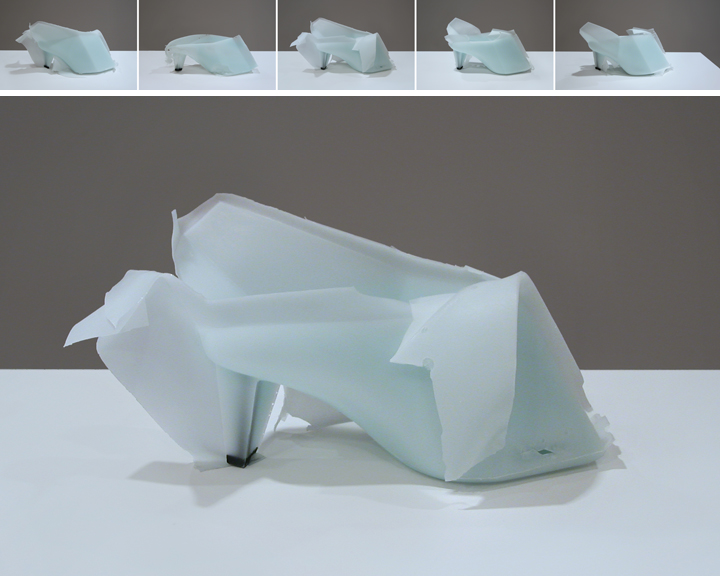
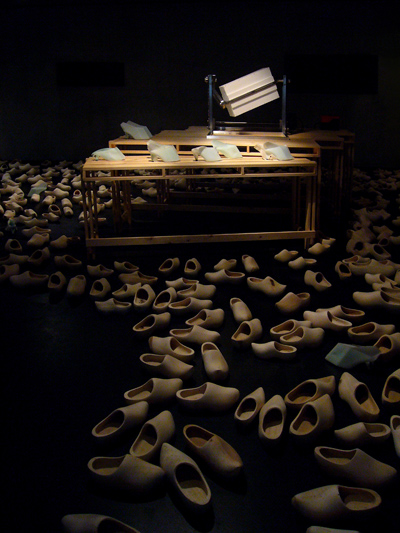 Industrious|Artefacts, the evolution of crafts, 26 May 2011 - 12 February 2012
Industrious|Artefacts, the evolution of crafts, 26 May 2011 - 12 February 2012
Zuiderzeemuseum, the Netherlands
Curators: Studio Makkink & Bey
Other exhibitors; Claire Warnier and Dries Verbruggen, Studio Glithero and Studio Makkink & Bey.
Guest curators Rianne Makkink and Jurgen Bey address the evolution of production processes and small industries through the work of Dutch and international designers.
Works on display:
Rotationalmouldedshoe / 2009
Rotationalmouldingmachine / 2009
Mutant Parade / 2009
Rotationalmouldedshoe was commissioned by the Krannert Art Museum in Illinois, USA.
________________________________________________________________________________________________________________________
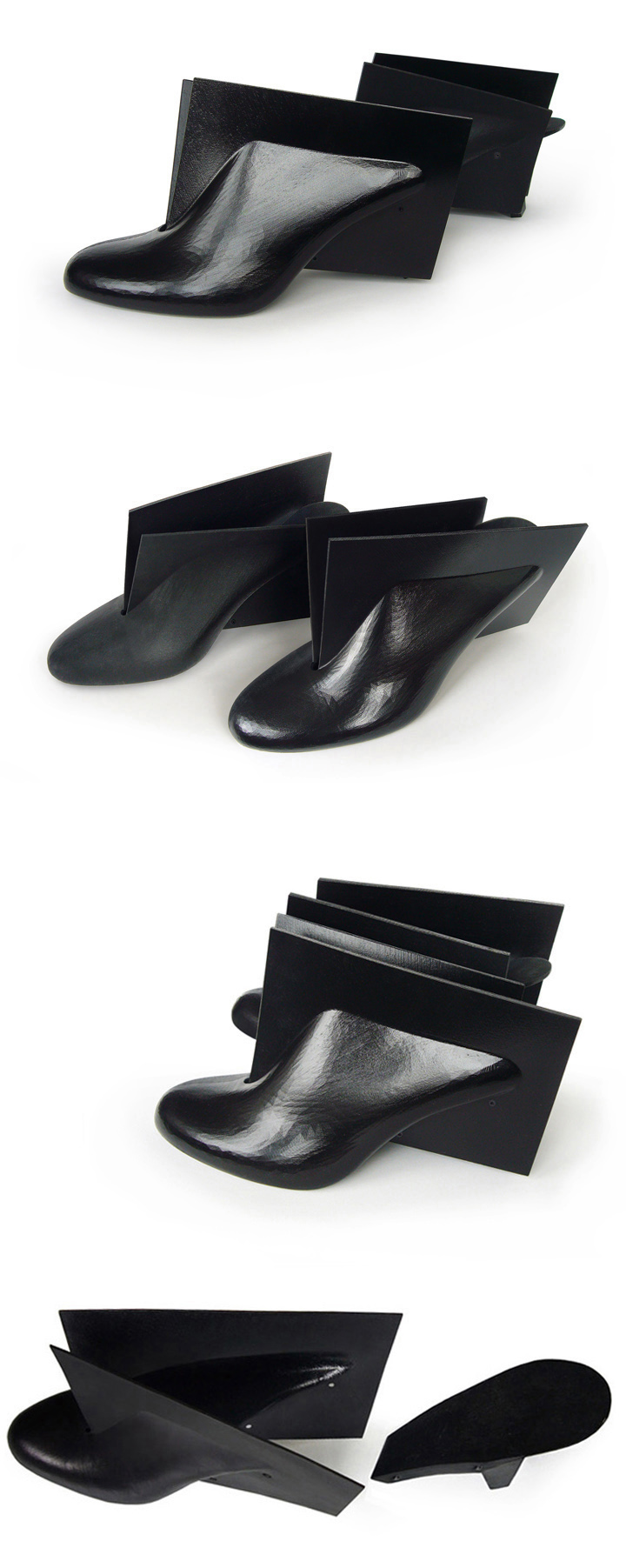 Rapidprototypedshoe / 2010Printed on an Objet Printing System
Rapidprototypedshoe / 2010Printed on an Objet Printing System
Mechanical Couture; Fashioning a New Order, 14 October 2010 – 8 January 2011
Design Museum Holon, Israel
Curators: Curatorsquared; Ginger Gregg Duggan and Judith Hoos Fox
Other exhibitors; Dai Fujiwara, Shelley Fox, Ying Gao and Simon Thorogood
www.dmh.org.il
Rapidprototypedshoe is made using an additive manufacturing technology in which successive layers of a photopolymer material are UV cured. The shoe is built in one go, but is comprised of two materials, which are organised into different microscopic structures, thereby enabling different material properties. As a result, the shoe has both flexible and rigid sections. The shoe has been designed to be disassembled for the purpose of replacing parts, despite having never been assembled in the first place.
When moving from rapid prototyping to rapid manufacturing, inherent construction possibilities and aesthetics of the production method needs to be explored. Certain design and production details such as the punch holes and screws in this design are not a derivative of this production method, but still make constructive sense.
Construct #2 / 2010
Construct #2 shows the step-by-step digital procedure for creating Rapidprototypedshoe. The series includes microscopic images of the material Rapidprototypedshoe has been made from, in both a liquid and cured state.
Shoe last.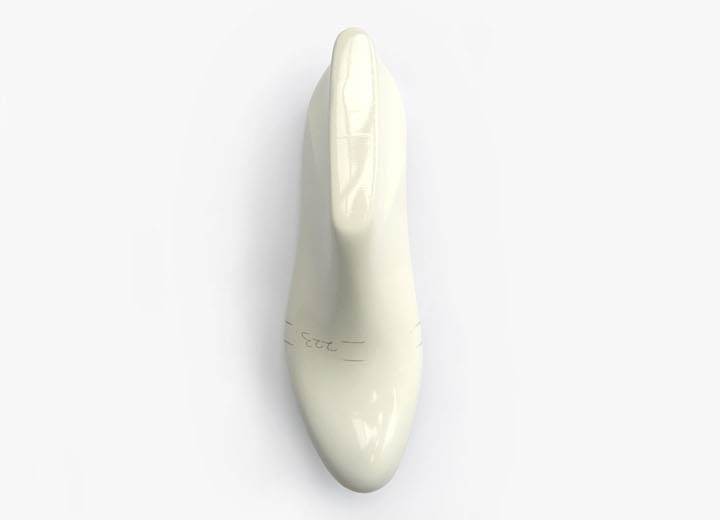 Digitising shoe last.
Digitising shoe last.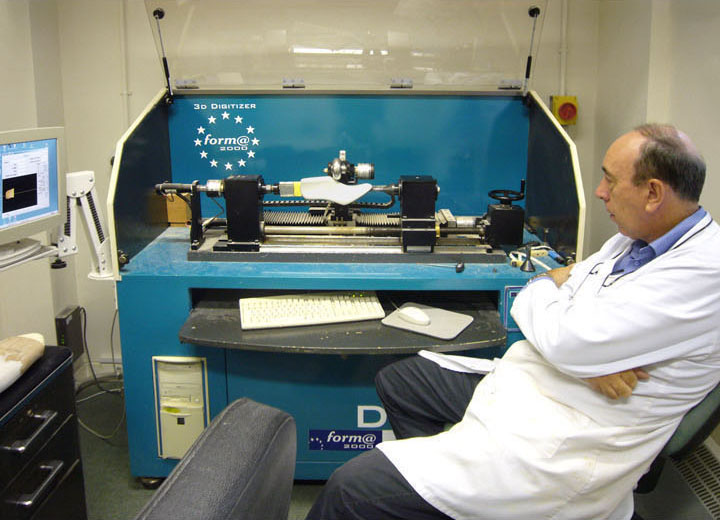 VeroBlack material cartridge for Objet's Connex500 multi-material 3D printing machine.
VeroBlack material cartridge for Objet's Connex500 multi-material 3D printing machine.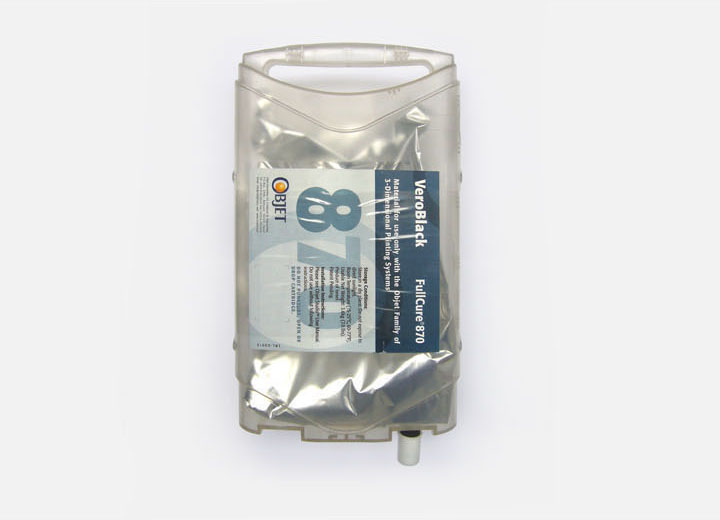 Creating 3D file in Rhino.
Creating 3D file in Rhino.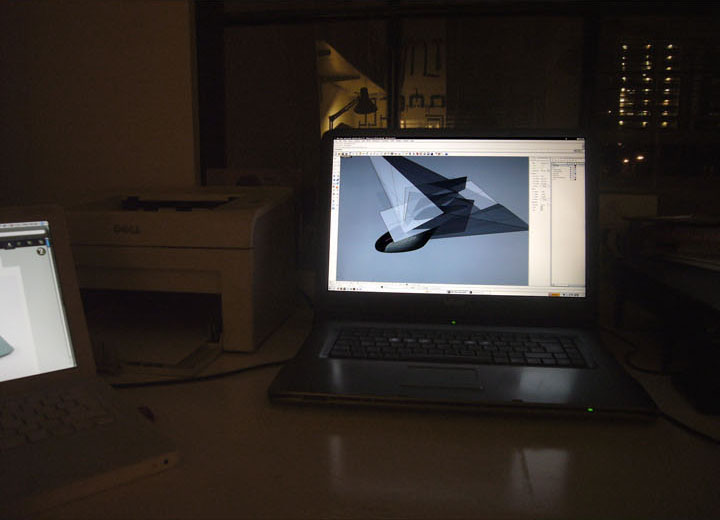 Digital microscopic image 50X zoom of VeroBlack material in liquid state.
Digital microscopic image 50X zoom of VeroBlack material in liquid state.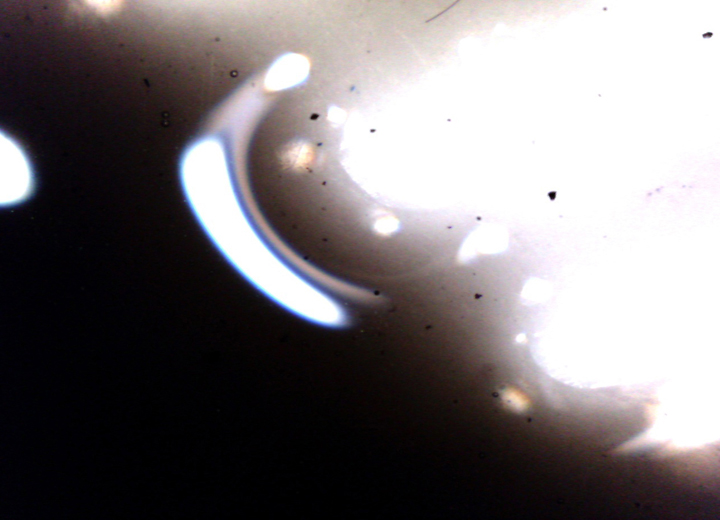 Digital microscopic image 50X zoom of VeroBlack material in built state.
Digital microscopic image 50X zoom of VeroBlack material in built state.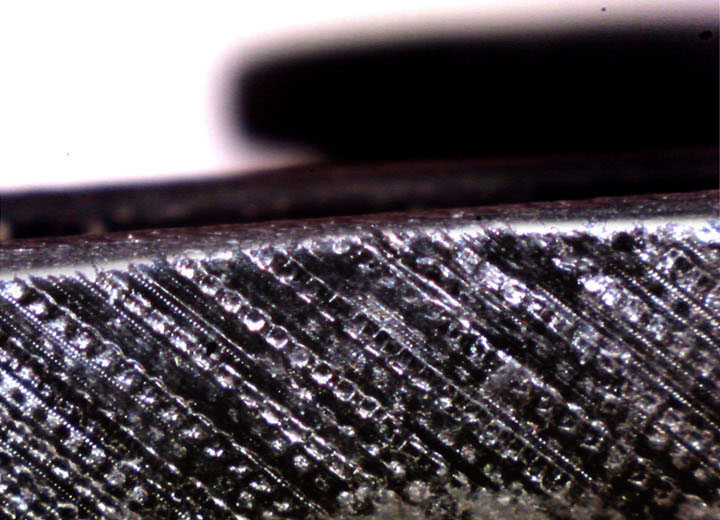 Digital microscopic image 50X zoom of VeroBlack scaffold material.
Digital microscopic image 50X zoom of VeroBlack scaffold material. 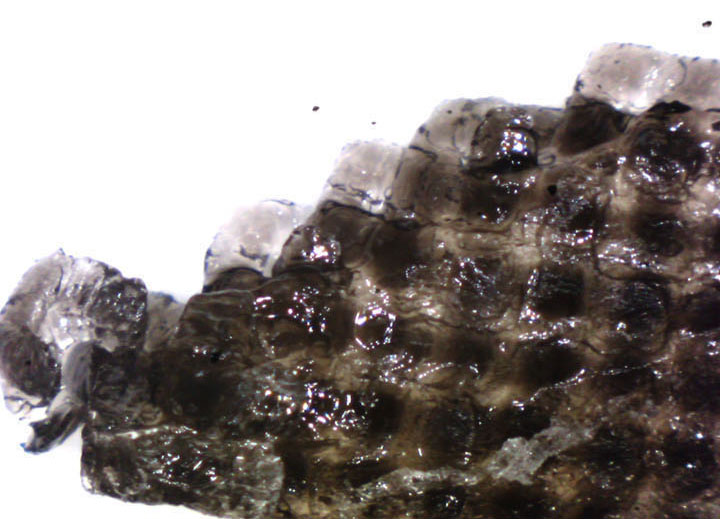 Rapidprototypedshoe.
Rapidprototypedshoe.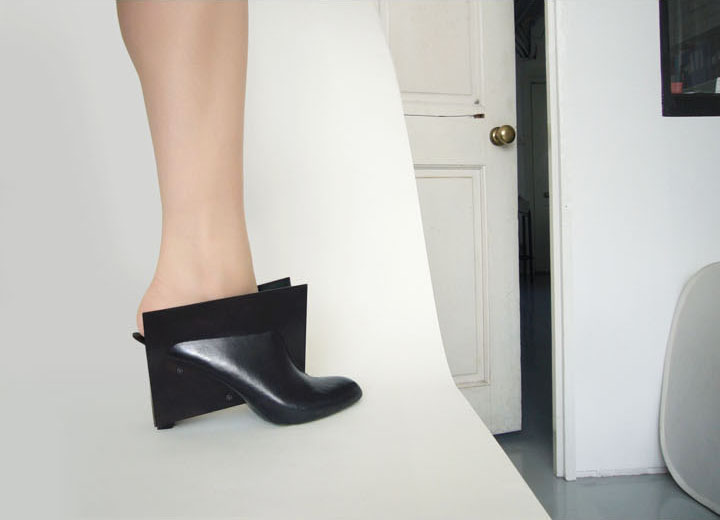 Exhibition shot, Design Museum Holon.
Exhibition shot, Design Museum Holon.
Other works on display:
After Hours / 2009
Materials: various
After Hours presents the step-by-step procedure for making Rotationalmouldedshoe, from material developments and experiments to the pouring, moulding and de-moulding process, along with a menagerie of material tests and failures, culminating in the finished pair. The stylized representation of the manufacturing process resembles a factory abandoned in the middle of production, and comments on the aesthetics, value, and economics of the machine-made.
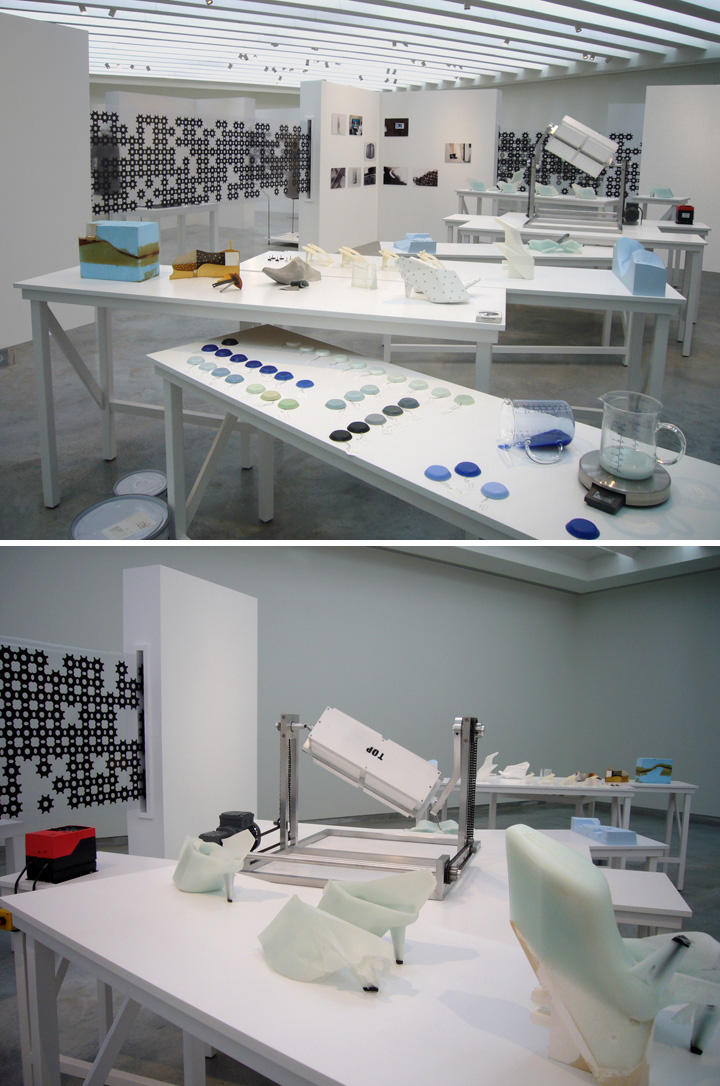 ________________________________________________________________________________________________________________________
________________________________________________________________________________________________________________________
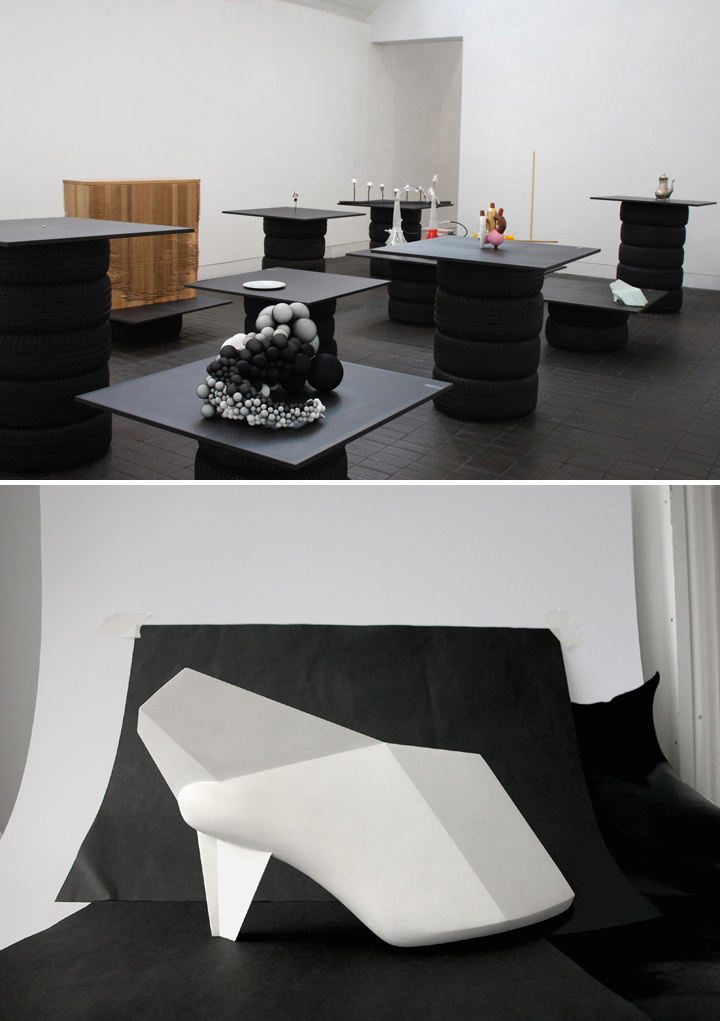 Jerwood Contemporary Makers, 17 June - 25 July 2010
Jerwood Contemporary Makers, 17 June - 25 July 2010
Jerwood Space, London
Selection panel: Hans Stofer, Richard Slee and Freddie Robins
www.jerwoodvisualarts.org
www.jerwoodspace.co.uk
Established in 2008, Jerwood Contemporary Makers is a three year initiative developed to support the applied arts and encourage new and stimulating ways of showing work across a range of disciplines. It replaces the Jerwood Applied Arts Prize, which was run in partnership with the Crafts Council for 11 years. The 2010 exhibition will be the last in the series. The 2010’s selection panel investigates the notion of making by bringing together a broad range of work from across craft and the visual arts.
Work on display:
Rotationalmouldedshoe / 2009
Materials: Polyurethane rubber and stainless steel
Rotationalmouldedshoe was specifically designed for the After Hours installation in the Krannert Art Museum in Illinois, USA.
________________________________________________________________________________________________________________________
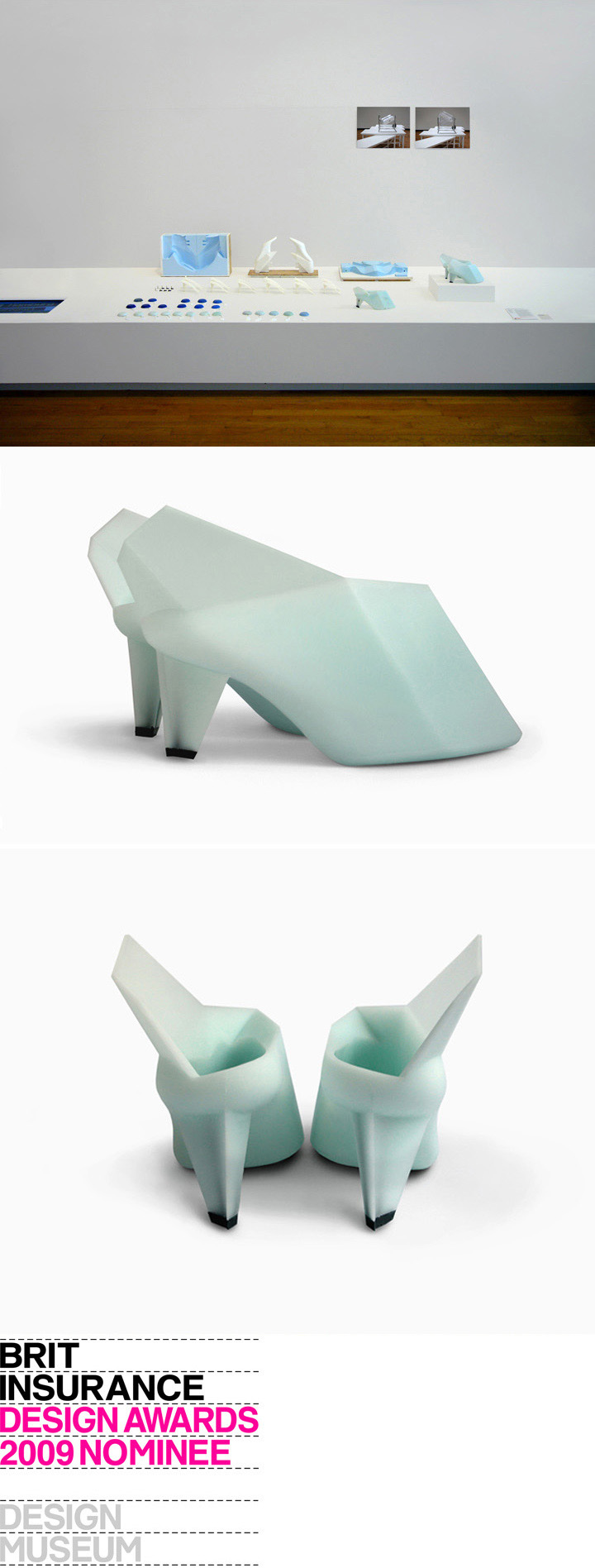
Rotationalmouldedshoe / 2009
Rotationalmouldingmachine / 2009
Brit Insurance Designs of the Year 2009, 12 February – 14 June 2009
Design Museum, London UK
Curator: Nina Due
www.designsoftheyear.com
________________________________________________________________________________________________________________________
After Hours / 2009
Construct / 2009 WOWdesign: Marloes ten Bhömer, January 30 - May 31
WOWdesign: Marloes ten Bhömer, January 30 - May 31
Krannert Art Museum, Illinois USA
Curators: Ginger Gregg Duggan and Judith Hoos Fox
Rotationalmouldingmachine designed by Nick Williamson
www.kam.uiuc.edu
After Hours presents the step-by-step procedure for making Rotationalmouldedshoe, from material developments and experiments to the pouring, moulding and de-moulding process, along with a menagerie of material tests and failures, culminating in the finished pair. The stylized representation of the manufacturing process resembles a factory abandoned in the middle of production, and comments on the aesthetics, value, and economics of the machine-made. Construct shows the step-by-step procedure for creating Beigefoldedshoe.
________________________________________________________________________________________________________________________
 Launch show Beigefoldedshoe / 2009
Launch show Beigefoldedshoe / 2009
Spring Projects, London
Curator: Andree Cooke
_______________________________________________________________________________________________________________________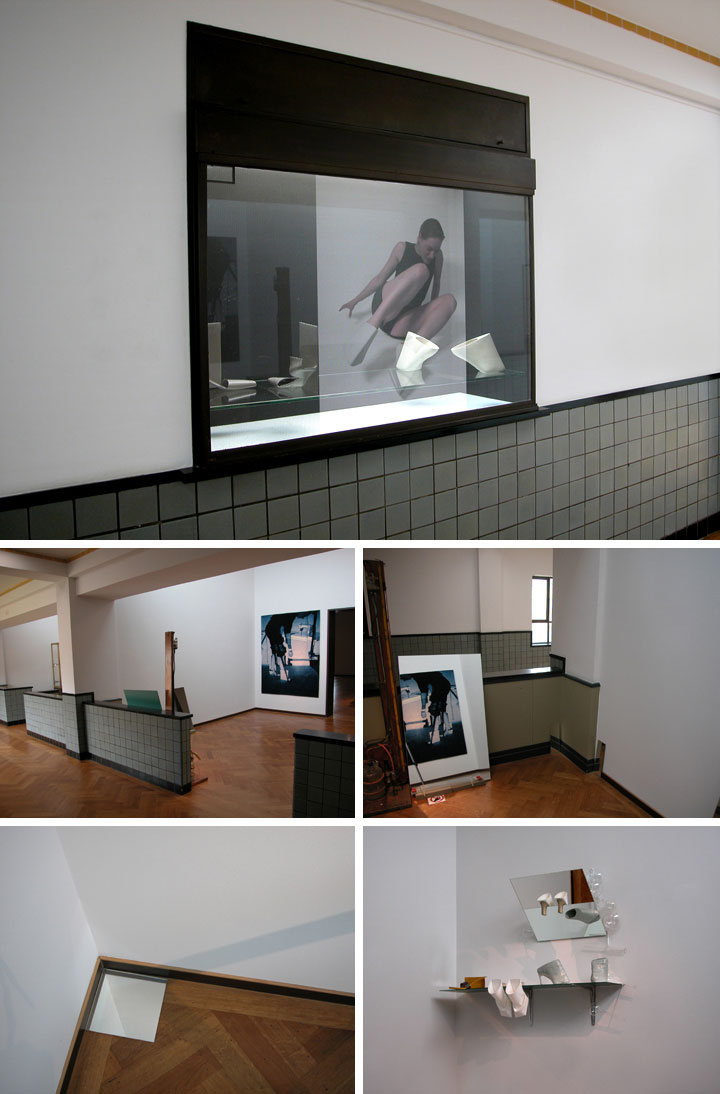 Fashion NL; The next generation / 2006
Fashion NL; The next generation / 2006
Gemeentemuseum, The Hague
Art director: Maarten Spruyt
Curator: Madelief Hohé
________________________________________________________________________________________________________________________
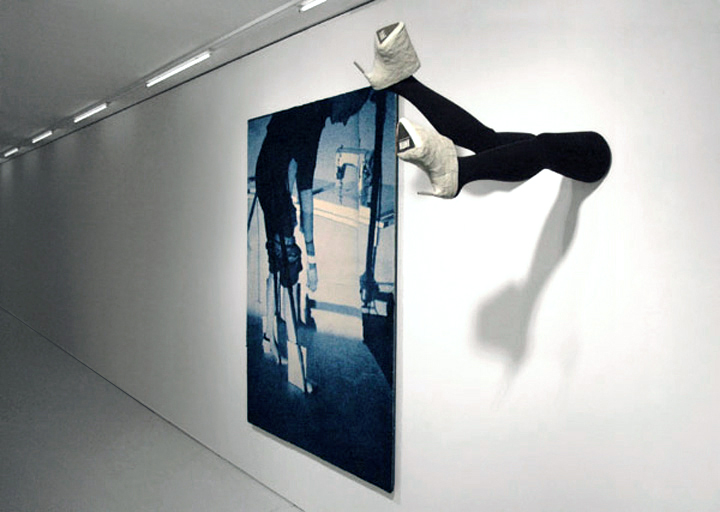 Everything Material Something Immaterial / 2007
Everything Material Something Immaterial / 2007
Gallerie Lucy Mackintosh, Lausanne
Curators UK part of the exhibition: Emily Campbell, British Council, Shumon Basar and Joshua Bolchover, Newbetter
Originally produced as the UK chapter of Get it Louder in Guangzhou, Shanghai and Beijing, 2007
________________________________________________________________________________________________________________________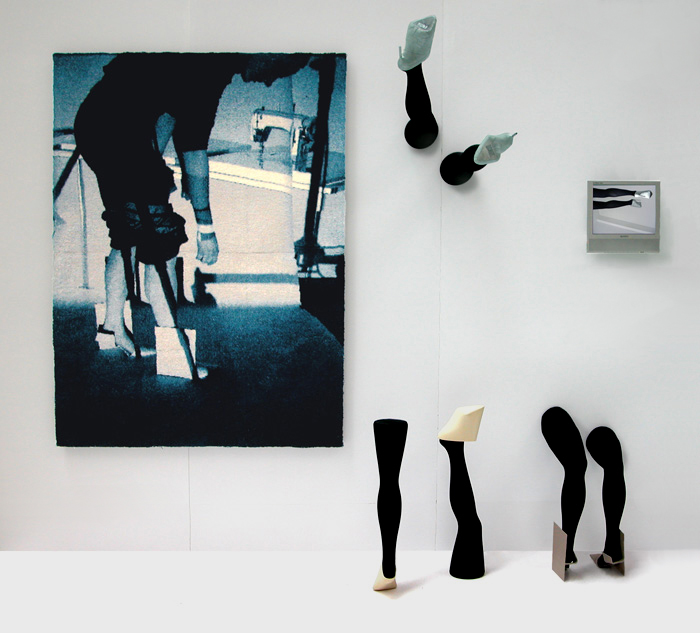
Get it Louder / 2007
Grandview Mall, Guangzhou / Daning the Life Hub, Shanghai / SOHO Shangdu, Beijing
Curators UK part of the exhibition: Emily Campbell, British Council, Shumon Basar and Joshua Bolchover, Newbetter
Organised by the British Council
________________________________________________________________________________________________________________________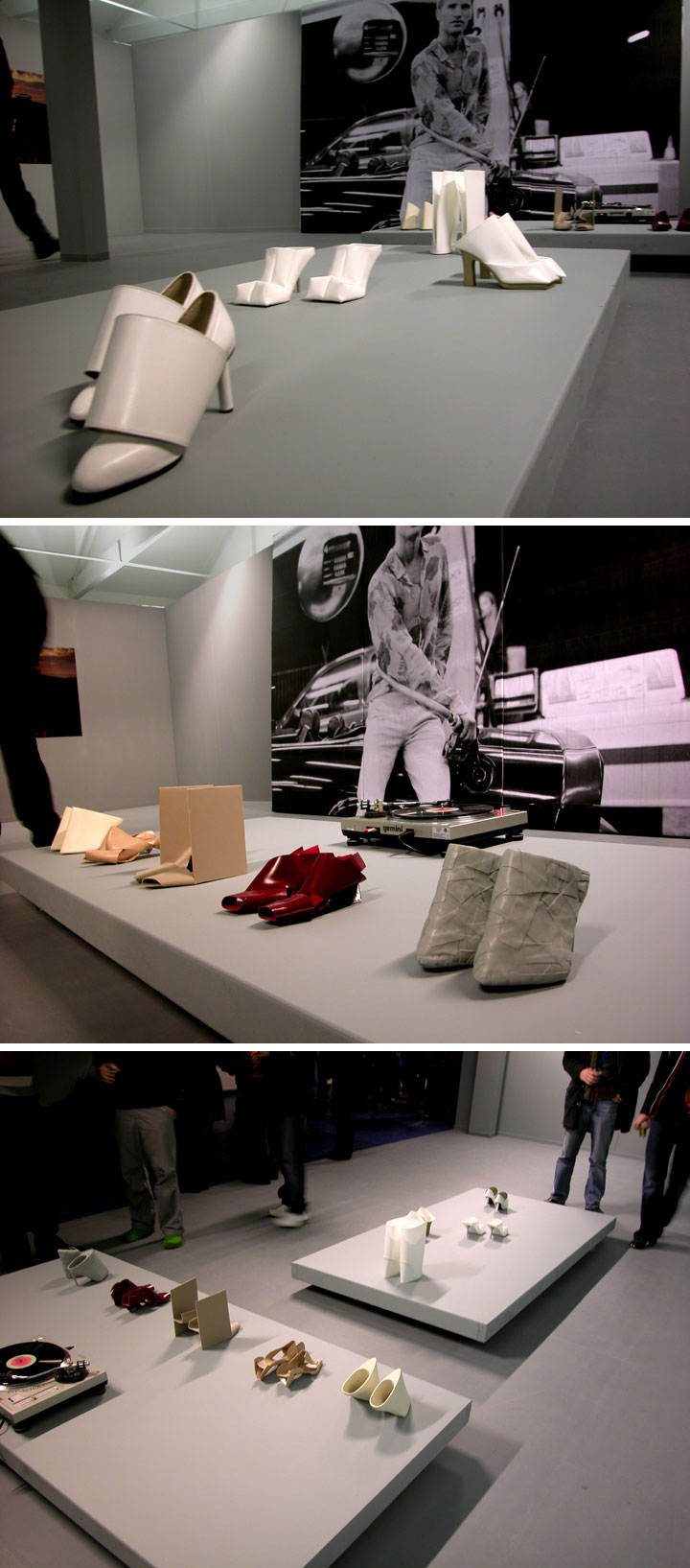
Shoes / 2004
Artsniper, Arnhem
Curators: Jaap Kroneman and Wilma Sommers
A series of 8 exhibitions starting with the exhibition “shoes”. Central focus of the exhibition, the complex and layered aspect of reality explored and expressed in art.
________________________________________________________________________________________________________________________
Made in Arnhem / 2005
MMKArnhem, Arnhem
Curator: Joke Alkema
"Pandora's Box", a display exhibit commissioned by the MMKArnhem entails several shoes and shoe related items that challenge Marloes’s vision of shoe design.
________________________________________________________________________________________________________________________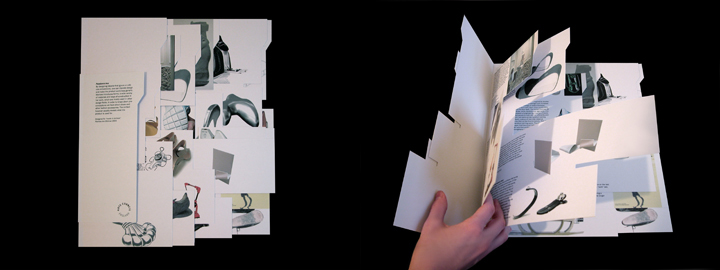
Made in Arnhem / 2005
MMKArnhem, Arnhem
Curator: Joke Alkema
Catalogue describing the displayed items in "Pandora's Box"
back to top
________________________________________________________________________________________________________________________
© Marloes ten Bhömer 2000-2023
